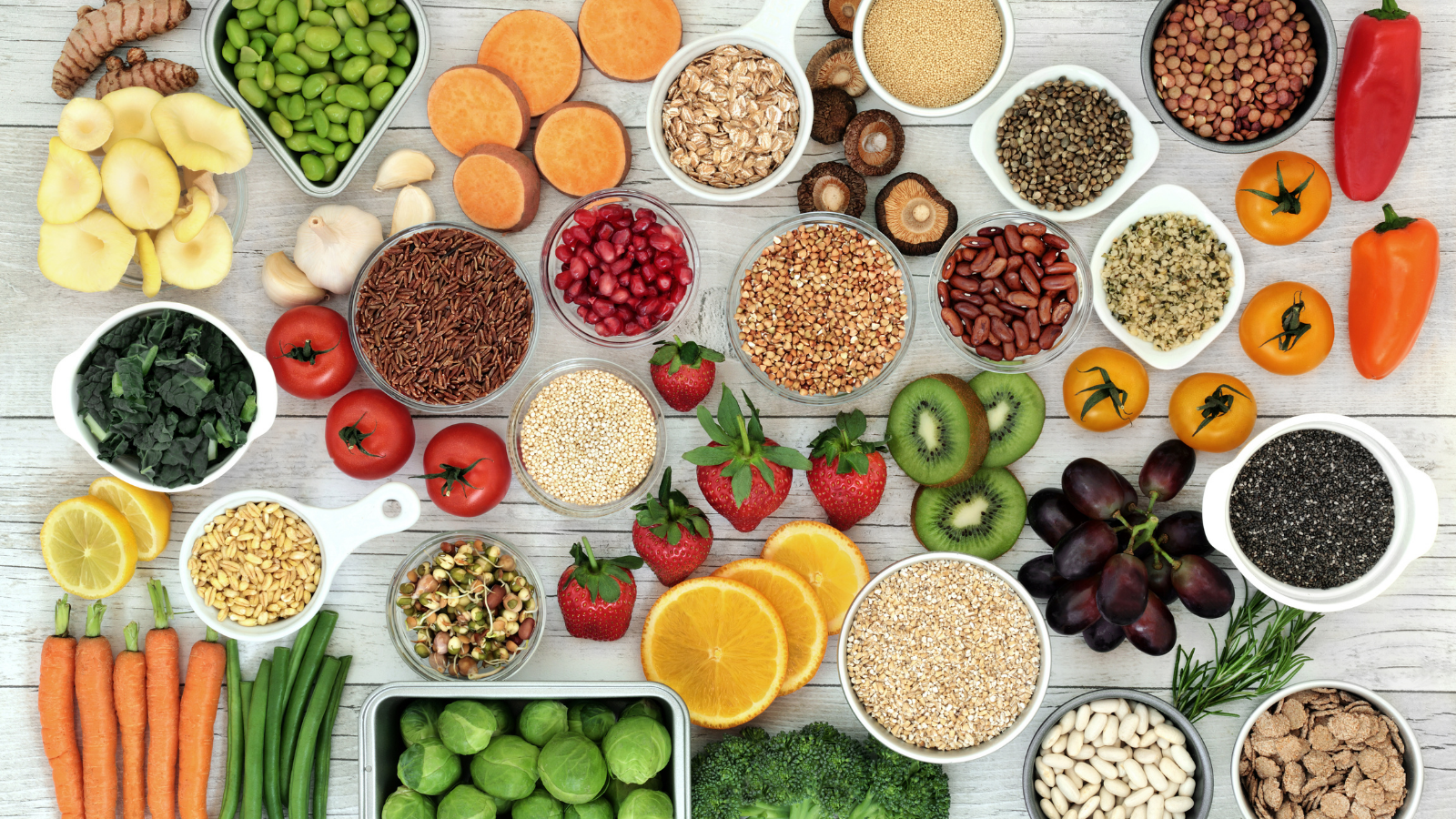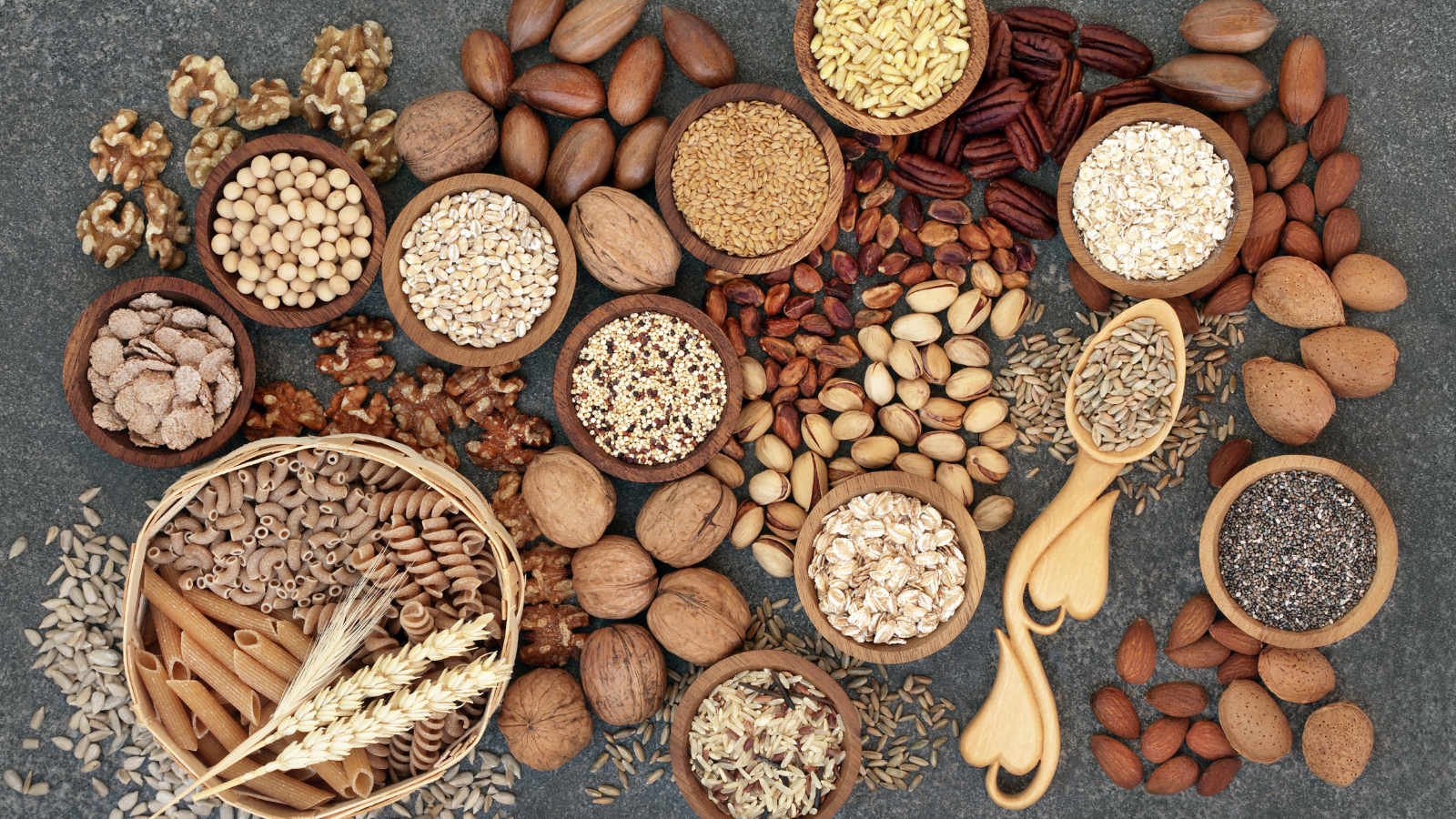How Much Protein Do You Need on a Plant-Based Diet?

Vegetarians and vegans concerned about their nutritional intake often wonder: how much protein should I consume? Active people who exercise a lot or are looking to build muscle in particular need lots of protein. How much is enough? What is the best way to make sure you’re getting enough protein on a plant-based diet? In this article, we’ll answer some of the most common questions about protein and plant-based diets, as well as give suggestions for some excellent sources of plant-based protein.
How Much Protein Do I Need?
High-protein and added-protein foods have become a common sight on supermarket shelves in recent years. These products often claim to have additional protein added to them, which is usually a plant-based protein. It makes it cheaper for manufacturers to include, but it also means this extra protein is suitable for vegans! That’s the good news, but how much protein do you need in your daily diet?
Sources vary on how much protein is necessary, with U.S. government guidelines currently at 0.8 grams per kilogram (2.2 pounds) of body weight. The WHO (World Health Organization), meanwhile, recommends 0.66 grams per kilogram. The exact answer depends on several factors, such as your age, gender, and level of activity. Someone who lifts heavyweights and is looking to build muscle should consume more protein, in the range of 1.3 grams of protein per kilogram of body weight.
What Is the Correct Proportion of Protein for My Diet?
Your protein intake should be considered within the broader scope of your overall diet. It is recommended that, proportionally, protein makes up between 10 to 15 percent of your overall daily caloric intake. For an average adult man, this works out to around 63 grams of protein per day and 52 grams for an average adult woman. It could go as high as over 100 grams of protein a day in the end, such as for endurance athletes and bodybuilders.

It’s possible to achieve these numbers on a plant-based diet. It’s estimated that, on average, vegetarians and vegans get 70 percent more protein than necessary in their daily diet. This figure is even higher for non-vegetarians, who consume almost 80 percent more protein than the recommended amount in their daily diet. Even for those looking to consume 100 grams of plant-based protein in a day, it shouldn’t be a challenging target to reach if you include several high-protein foods in your meals.
What Are the Best Sources of Protein for a Plant-Based Diet?
The good news is that there are plenty of good sources of plant-based protein for those on a plant-based diet. Below is a selection of just some of the many choices available to vegetarians and vegans.
Tofu
Soy products are some of the best sources of plant-based proteins. Soy comes in many different forms, including soy sauce and edamame. We’ve chosen to highlight tofu in particular due to its versatility, making it something you can have for breakfast, lunch, dinner, or even dessert.
Tofu’s versatility is due to its different types of firmness. This simply refers to how much water it has absorbed. The more water it absorbs, the softer and silkier the texture becomes. Silken tofu is the most delicate tofu and is commonly used in dessert dishes. By contrast, the super firm is often used as a meat substitute in dishes due to its texture and “bite.” The super firm is the firmest tofu, but it’s less common than regular or firm tofu. Regular tofu’s firmness is somewhere between super firm and silken.

Nuts
Nuts are very nutritious, being generally high in fat and protein. There’s plenty of variety, too, from peanuts to walnuts, cashews, pecans, pistachios, and plenty more. There’s also an almost endless variety of ways to prepare and eat them, from nut butter to nut milk, added to desserts, mains, eaten on their own or as part of a trail mix, and many, many more. They’re also typically high in calories, so it’s essential to be mindful of how much you eat, but nut-based products can be an excellent substitute for dairy and meats.
Buckwheat
Buckwheat, despite its name, is not a wheat at all but rather a seed. Buckwheat is common in eastern Europe, and it’s excellent as a side dish or alternative to oats. It can be eaten on its own or can be added as a side dish used in the same way as rice. Buckwheat can be eaten directly as a grain or prepared and made into other popular dishes that use buckwheat flour, such as buckwheat noodles. Buckwheat noodles are famous in Japan, where they are known as soba noodles. It’s a popular and delicious dish in restaurants with the added benefit of being gluten-free, so if you’re a celiac who loves noodles, then buckwheat could be a good choice for you.
Quinoa
Quinoa is another high-protein, gluten-free alternative to grains like wheat and rice. Much like buckwheat, quinoa isn’t a grain, but a seed. However, it is high in protein and is a complete protein, containing all nine essential amino acids. It’s a versatile food that can be eaten on the side or prepared as the main ingredient. Its porous nature allows it to absorb the flavors of many different dishes easily.
How Common is Protein Deficiency in a Plant-Based Diet?
Recent decades have seen a shift in how people view and assess their diets, emphasizing nutrition. Fast food menus now regularly contain salads and other “healthy” options, and sugar-free and sugar-alternative sodas are now familiar sights on supermarket shelves. People are more interested in what they eat and what the food they eat contains.
One common concern for vegetarians and vegans alike is whether they are getting enough protein in their diet. It’s a common misconception that meat is the best source of protein, and therefore people who do not eat meat are at risk of protein deficiency. The truth is that protein deficiency is very uncommon for both plant-based diets and non-vegetarian diets alike. Most people get more than the recommended amount of protein from their daily diet without intentionally trying. Protein deficiency is rarely seen outside of those suffering from an overall calorie intake deficiency. Even in this case, the answer would be to simply consume more calories, rather than specifically worry about how many of those calories are from protein.
Choosing a Diet that Works for You
The most crucial aspect of any diet is how much you enjoy it. There’s no point picking the most protein-dense foods you can find if you don’t like them, as you’re not likely to last long if you’re making yourself eat foods you don’t like. There are many varied sources of high-quality protein available to those on a plant-based diet, so shop around and try to prepare different meals and snacks with them to find the foods that work for you.
Also, read...
Savor Your Food: Chair Yoga for Mindful Eating
Roasted Root Vegetable and Chickpea Soup
How Much Protein Do You Need on a Plant-Based Diet?
Related courses
Breath as Medicine: Yogic Breathing for Vital Aging
Yoga and Myofascial Release: Releasing Chronic Tension with the Bodymind Ballwork Method
Yoga and Detoxification: Tips for Stimulating Lymphatic Health

Tim O’Brien: Owner & Founder, Manager at FindYourHealthyPlace.com
Tim has extensive experience in the health and wellness industry. He began his career ten years ago as the District Manager for GNC franchises and the manager of Elite Nutrition. During those years, he built a solid foundation of knowledge and expertise. His passion and success gave him the vision to open his own business.



